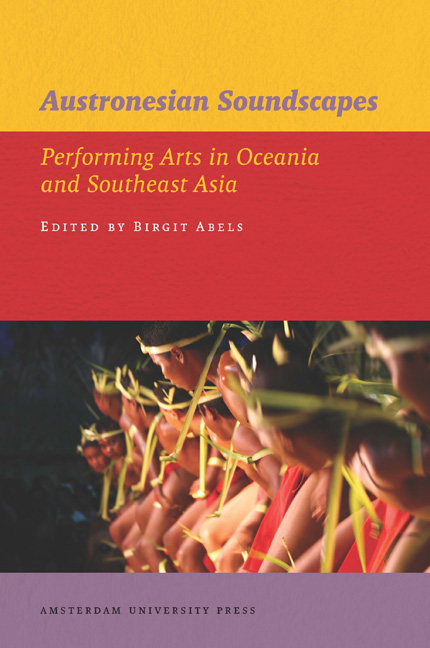5 - To Sing the Rice in Tanjung Bunga (Eastern Flores), Indonesia
Published online by Cambridge University Press: 20 January 2021
Summary
Introduction
This chapter discusses the place of polyphonic singing in the life of a village in Eastern Flores (Indonesia). Even today, the people of this area fear starvation: finding food here is more difficult than in other places, as their slash and burn agriculture is dependent on rain that seems to never be sufficient. In the village of Waiklibang (see map, fig. 5.1), people sing during various times of the year. In its course, the agricultural year calls for the performance of prescribed songs directly rooted in the myth of the origin of rice, which includes a recounting of a primordial sacrifice. In this particular part of insular Southeast Asia, this myth is not merely known or told, but sung, danced and performed. Referencing this myth according to a prescribed pattern, music has the capacity to evoke a strong emotional response in people, even moving some to tears. This paper suggests how the expressive modalities of poetics and song, bound by performance codes, in their textual and musical structure, reconfirm the myth of the origin of rice, communicate deeply felt sentiments, and thus arouse feelings.
I came to Eastern Flores to study the polyphonic vocal tradition, its setting, its techniques, and its uses. My interest was aroused when I first visited as a student, accompanying a friend in 1992, to record the various musical traditions of Flores over a period of five weeks. Music is ubiquitous on the island, but I was especially taken by the ‘strange’ duets we recorded in the Tana ‘Ai area in the Sikkanese region (Rappoport 1995). Since then, I have wanted to return to study the two-part songs of Eastern Flores and beyond. Indeed, the very defining feature of the music of Eastern Flores is that people sing in two parts, and that the voices move within a narrow compass, using a contrapuntal technique. According to my own calculations, the intervals between the two voices often vary between 100 to 300 cents. This technique has been called ‘the Balkan sounding style of East Flores’, after Jaap Kunst who looked at the similarities between the Eastern Flores style and Balkan songs (Kunst 1942; 1954).
- Type
- Chapter
- Information
- Austronesian SoundscapesPerforming Arts in Oceania and Southeast Asia, pp. 103 - 132Publisher: Amsterdam University PressPrint publication year: 2012
- 1
- Cited by



